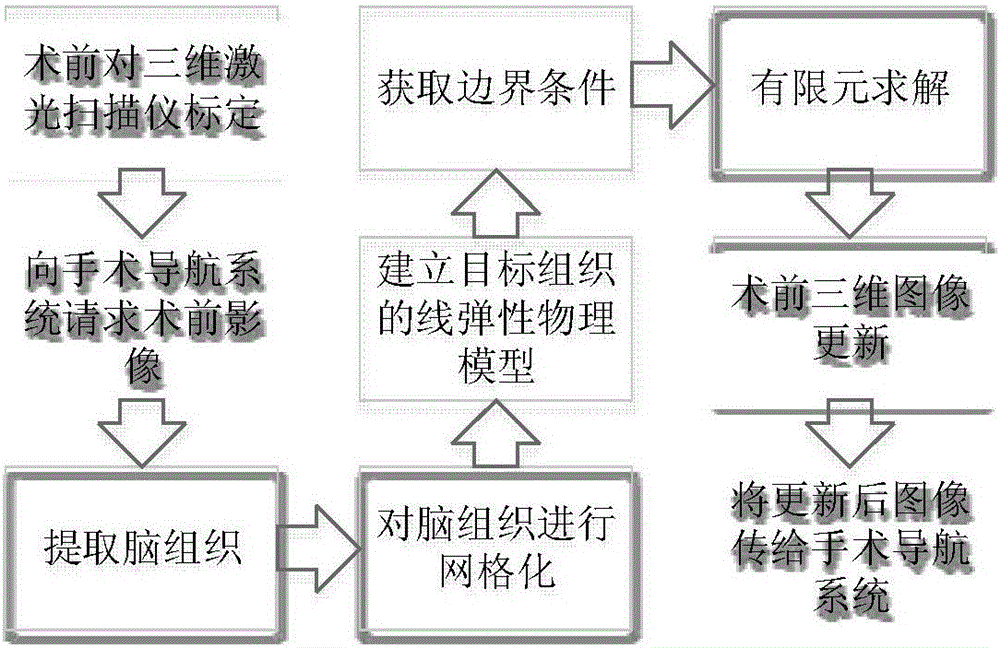Brain tissue deformation correction system based on wireless transmission
A technology of wireless transmission and brain tissue, which is applied in the field of medical image processing and application, and can solve the problems of not getting rid of dependence, the decrease of accuracy of neurosurgical navigation system, deformation and so on
- Summary
- Abstract
- Description
- Claims
- Application Information
AI Technical Summary
Problems solved by technology
Method used
Image
Examples
Embodiment 1
[0051] Embodiment 1 clinical trial
[0052] 1. Install the tracking tool on the 3D laser scanner, and use the calibration module to calibrate to obtain the coordinate transformation relationship from the space transformation of the 3D laser scanner to the space of the tracking tool;
[0053] 2. The brain tissue deformation correction workbench communicates with the neurosurgical navigation system to request the transmission of preoperative image data. The brain tissue deformation correction workbench is the client, and the neurosurgical navigation system is the server. The client first sends the command code CMDASKIMG; the server confirms that the command code is correct, and sends CMDREQACK to confirm; the server sends the preoperative image data to the client, and stores the 240×240×197 three-dimensional MRI brain tissue data in a one-dimensional array; the server Send CMDSENDFIN to stop the transmission; after receiving CMDSENDFIN, the client stops receiving and saves the ...
PUM
 Login to View More
Login to View More Abstract
Description
Claims
Application Information
 Login to View More
Login to View More - R&D
- Intellectual Property
- Life Sciences
- Materials
- Tech Scout
- Unparalleled Data Quality
- Higher Quality Content
- 60% Fewer Hallucinations
Browse by: Latest US Patents, China's latest patents, Technical Efficacy Thesaurus, Application Domain, Technology Topic, Popular Technical Reports.
© 2025 PatSnap. All rights reserved.Legal|Privacy policy|Modern Slavery Act Transparency Statement|Sitemap|About US| Contact US: help@patsnap.com



